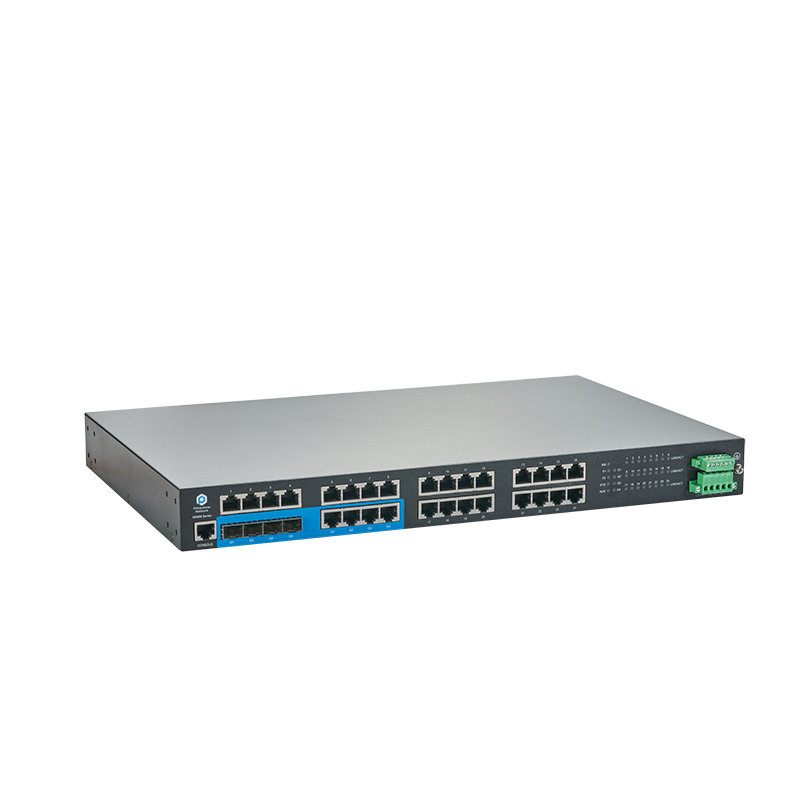The addition of industrial grade words to Ethernet switches has undergone a qualitative change in their functionality and applications. Many industrial application scenarios are harsh, either in the sun or in the wind, and Industrial Ethernet switches are designed for these scenarios. Industrial Switch equipment has many functions, and for assembly and maintenance personnel, how to better manage it has become increasingly important. Industrial switches are divided into unmanaged and managed switches, and the layer 2 and layer 3 functions of managed industrial switches have emerged one after another.
As mentioned earlier, managed industrial switches include layer 2 managed switches and layer 3 managed switches. So what is the difference between the two?
The routing process is an important difference between Layer 2 and Layer 3 industrial switches. When the layer 2 switch works, it encapsulates the broadcast in the subnet, while the layer 3 switch maps and connects. From the perspective of management efficiency, layer 3 switches are relatively superior, and for industrial networks with high management requirements, layer 3 switches are more concerned.
Routers are a common example of industrial switches from an application perspective. All devices connected to the layer 3 switch port will have a separate IP address because it follows Internet protocol standards. The layer 2 switch does not change the MAC address of the device and can assign dynamic IP addresses to connected devices. Therefore, it can also be said that many routers belong to layer 3 switches, and all they need to do is route data frames from the host to the client.

Many layer 3 switches have router functionality and are equipped with additional power supplies and fans. These layer 3 switches are generally used in large enterprise networks and data centers. They can divide large LANs into many VLANs and have 3-layer inter VLAN routing capabilities.
In terms of appearance, layer 2 industrial switches are usually smaller in size, available in both rail and desktop (rack mounted) versions. In terms of operational difficulty, layer 2 switches are relatively easier to configure. However, layer 3 industrial switches often have more functions and higher performance than layer 2 industrial switches:
Higher speed and greater throughput: A layer 3 switch has higher processing speed and greater data throughput than a layer 2 switch, which can process data packets faster and support more device connections.
More effective network division: Layer 3 switches can better divide the network by creating VLAN (VLAN). This means that different users and devices can be isolated into different VLANs, achieving better network security and higher resource utilization.
More flexible routing function: The layer 3 switch can achieve routing functions between multiple networks that are different from the layer 2 switch. This enables data packets to be transmitted between different networks, thereby improving the efficiency of the entire network.
Better network management and security: The layer 3 switch can perform more refined management and monitoring of network data, and provide stronger security and access control functions.
In terms of application scope, layer 3 industrial switches can support more powerful protocols and functions, such as supporting large-scale topologies, so what you see in control cabinets or data centers are mostly layer 3 switches.
Rather than being more powerful than the layer 2 switch, it is better to say that the two focus on different application fields. They are all exerting their own value in various fields. Whether it is a layer 2 or a layer 3 switch, managed industrial switches can easily configure all devices on the network, remotely change multiple parameters, and troubleshooting is also very simple.
Contact: sales
Phone: 18688787693
E-mail: sales@hsindustrialswitch.com
Add: Room 608, Building B,GaoXinQi TEC Park,Baoan District, ShenZhen,China